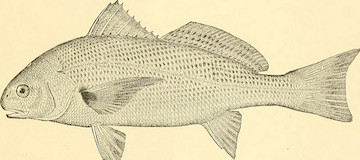loudmouth.jpg

The male Gulf corvina can be 20 times louder than background noise level. Photo Credit: Public Domain
The male Gulf corvina is a loudmouth. In fact, it may be too loud for its own good. Its sounds guide fishing boats right to its own spawning grounds. And that could endanger the entire corvina population.
Appropriately enough, Gulf corvina are a type of croaker. They inhabit the Gulf of California, between Baja California and the Mexican mainland. Every spring, the entire adult population gathers to spawn at the northern edge of the gulf -- at the mouth of the Colorado River. To help them attract mates, male corvina make a lot of noise -- a series of short, loud pulses.
In 2014, that loud exhibition was studied by Brad Erisman of the University of Texas Marine Science Institute, and Timothy Rowell of the Scripps Institution of Oceanography. They used underwater microphones and other tools to record the sound of individual corvina, as well as the “chorus” of the entire population.
They found that the chorus can be more than 20 times louder than the background noise level. They also found that individual corvina are louder than any other fish yet recorded.
The combined sound is loud enough to hear above the surface with the ear alone. That attracts the local fleet of about 500 small boats to the spawning grounds. In the three-week fishing season, the fleet can gather about two million fish. That could decimate the population, causing the fishery to collapse. So managers and the fishing fleet alike need to “listen” to what’s happening to this loudmouth fish.

